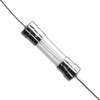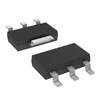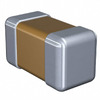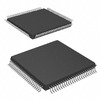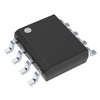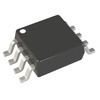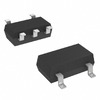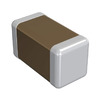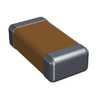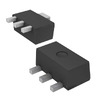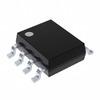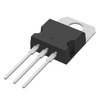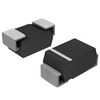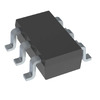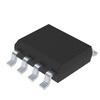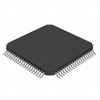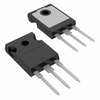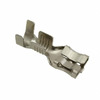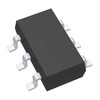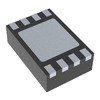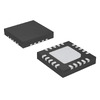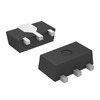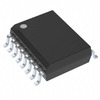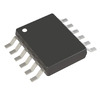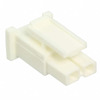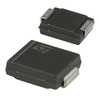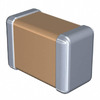Complete Guide to the 2N3906 PNP Transistor
The 2N3906 transistor is a popular PNP transistor used in simple amplifying and switching circuits. This guide covers its features, uses, pin layout, and practical applications to help you understand its role in various electronic projects.Catalog
[IMAGE OF 2N3906]
Overview of 2N3906 Transistor
The 2N3906 is a commonly used PNP transistor that serves well in low-power amplification and switching tasks. Designed to handle moderate voltage levels and small currents, it operates by toggling the collector and emitter junctions between open and closed states depending on the base pin's voltage. When the base pin is grounded, the transistor is in a forward-biased state, allowing current to flow from the emitter to the collector. When a signal is applied to the base, it goes into a reverse-biased state, stopping current flow.
With a gain value between 110 and 300, this transistor can effectively amplify small signals. However, it has a current limit on its collector, so it’s best suited for applications where the current requirement stays under 200mA. The 2N3906 has two main operational states: saturation, where the transistor is fully on, allowing maximum current flow, and cutoff, where it’s entirely off with no current between the emitter and collector. These properties make it versatile for many general-purpose applications, whether in basic amplifiers or simple switch circuits.
Pin Layout for 2N3906 Transistor
[IMAGE OF 2N3906 Pinout]
Pin Configuration
[table OF 2N3906 Pinout]
2N3906 CAD Model
2N3906 Symbol
[IMAGE OF 2N3906 Symbol]
2N3906 Footprint
[IMAGE OF 2N3906 Footprint]
2N3906 3D Model
[IMAGE OF 2N3906 3D Model]
Key Features of 2N3906 Transistor
PNP Transistor Design
The 2N3906 is a PNP transistor, meaning it conducts current when its base is at a lower voltage than the emitter. This design allows it to control current flow effectively in low-power circuits where this type of polarity is needed.
High DC Current Gain
With a DC current gain (hFE) of up to 300, the 2N3906 can amplify small base currents to produce larger collector currents. This feature makes it a good choice for applications requiring moderate signal amplification.
Moderate Current Handling
The transistor can handle a continuous collector current of 200mA. This capacity enables it to control low-power devices without overheating or needing additional cooling measures, provided that the current remains within its safe range.
Emitter-Base Voltage
An emitter-base voltage (VBE) of 5V means that the 2N3906 can manage circuits with a reasonable voltage range, making it suitable for typical low-voltage applications without requiring complex adjustments.
Compact To-92 Package
The 2N3906 is available in a TO-92 package, which is small and convenient for use on breadboards and in compact circuits. This makes it easy to integrate into projects where space is limited.
2N3906 Transistor Specifications
Technical specifications, features, characteristics, and components with comparable specifications of ON Semiconductor 2N3906BU.
[TABLE OF Specifications]
Circuit Applications of 2N3906
The following diagrams show the 2N3906 Circuits.
Delay and Rise Time Equivalent Test Circuit
[IMAGE OF Delay and Rise Time Equivalent Test Circuit]
Storage and Fall Time Equivalent Test Circuit
[IMAGE OF Storage and Fall Time Equivalent Test Circuit]
Equivalents of 2N3906 Transistor
[TABLE OF 2N3906 Equivalent]
Alternative Options for 2N3906
• BC157
• BC558
• 2SA1943
• BD140
• S8550
• TIP127
• TIP42
Functionality of 2N3906 in a PNP Circuit
In a basic PNP circuit using the 2N3906, the transistor typically functions as either a switch or an amplifier. To operate as a switch, the emitter is connected to a positive voltage source, such as +3V, while a pushbutton switch is placed at the base. With the button unpressed, no current flows to the base, keeping the transistor in an "on" state by default. This configuration allows current to flow through to the collector, powering any connected component, such as an LED.
When the button is pressed, the voltage at the base becomes greater than that at the emitter, which blocks current flow between the emitter and collector, effectively switching off any connected component. This setup demonstrates the core principle of a PNP transistor: it remains in an "on" state as long as the base voltage is lower than the emitter. When the base voltage exceeds the emitter, it blocks current flow, thus turning the circuit "off."
[IMAGE OF 2N3906 in PNP Circuit]
Uses of 2N3906 Transistor
The 2N3906 is widely applicable for switching and amplification tasks. Its structure makes it ideal for switching high-voltage, low-current loads, especially when working within its 200mA current limit. It can be used in circuits where consistent, low-level amplification is needed, though its gain limit means it isn’t suited for heavy-duty amplifying. Due to its PNP nature, it’s often chosen when reverse-polarity configurations are required, making it versatile for various low-power applications, including signal control, LED circuits, and low-current motor drivers.
Guide to Operating the 2N3906 as a Switch
Operating the 2N3906 as a switch is straightforward. In a standard PNP configuration, the transistor is usually "on" when the base pin is grounded. This default "on" state allows current to flow from the emitter to the collector. To turn the switch "off," a voltage source is applied to the base pin, which prevents current from flowing between the emitter and collector. This design helps with controlling small loads without requiring complex setup.
To protect the transistor in switch mode, it’s common to place a resistor between the base and the controlling input, calculated using the formula RB = VBE / IB. This resistor ensures that the current flowing to the base pin remains within safe limits, preventing any potential damage to the transistor. When configured with this resistor, the 2N3906 can reliably control a range of low-current devices, such as small motors or LEDs.
Parts with Similar Specifications to 2N3906 Transistor
The parts on the right have specifications similar to the ON Semiconductor 2N3906BU.
[TABLE OF Parts with Similar Specs]
Applications of 2N3906 Transistor
Low-Power Switching
The 2N3906 is commonly used for switching low-current, high-voltage loads. It’s ideal for circuits where you need a reliable switch that doesn’t draw much power, such as LED arrays or simple relay controls.
Signal Amplification
Its moderate gain allows it to amplify signals in low-power audio circuits and other small amplification setups. While it’s not suitable for high-power amplification, it’s a great fit for smaller, consistent signal boosts.
Inverter and Converter Circuits
The PNP design makes the 2N3906 useful in inverter and converter circuits, particularly where current direction control is needed. It can be set up to switch currents, supporting conversion functions in simple power management designs.
Dual LED or Lamp Flasher
The transistor can also be used in circuits designed to flash LEDs or lamps. By controlling current flow based on the input signal, it creates a simple flasher effect, useful in indicator lights or warning signals.
Darlington Pair Configurations
For applications needing higher gain, the 2N3906 can be paired with another transistor in a Darlington configuration. This setup amplifies current even further, making it possible to drive slightly larger loads while maintaining good performance.
2N3906 Package Types
TO-92 (Bulk)
[IMAGE OF TO-92 (Bulk)]
TO-92 (Ammo, Tape, and Reel)
[IMAGE OF TO-92 (Ammo, Tape, and Reel)]
Marking Diagram for 2N3906 Transistor
[IMAGE OF 2N3906 Package Marking Diagram]
About the Manufacturer of 2N3906
ON Semiconductor, a widely respected manufacturer, focuses on providing efficient power and signal management solutions. Their products, including the 2N3906, are designed to meet the needs of a broad range of applications, from automotive and communications to computing, consumer electronics, and industrial systems. Known for their innovation and commitment to quality, ON Semiconductor offers reliable components that are used by engineers and designers worldwide to create effective, sustainable solutions. Their focus on power efficiency helps support environmentally friendly and energy-saving projects across multiple industries.
Frequently Asked Questions [FAQ]
1. How many pins does the 2N3906BU transistor have?
The 2N3906BU transistor has 3 pins, which are the emitter, base, and collector.
2. What is the operating temperature range of the 2N3906BU?
The 2N3906BU operates within a temperature range of -55°C to 150°C, which supports use in various conditions.
3. What type of transistor is the 2N3906?
The 2N3906 is a PNP bipolar junction transistor, meaning it allows current flow when the base is at a lower voltage than the emitter.
4. How fast can the 2N3906 operate?
The 2N3906 operates at moderately high speeds, making it suitable for quick-switching tasks in circuits.
5. What roles does the 2N3906 typically perform in circuits?
The 2N3906 transistor is commonly used as a switch or an amplifier, depending on the circuit configuration.
6. What makes the 2N3906 transistor unique?
The 2N3906 has a high collector-to-emitter voltage, allowing it to handle higher voltages in low-current applications.
7. What is the base-emitter voltage (VBE) of the 2N3906?
The VBE for the 2N3906 is 5V, which defines the voltage needed to activate the base and allow current flow.
8. In which regions does the 2N3906 operate?
The 2N3906 operates in two main regions: the saturation region, where it is fully on, and the cutoff region, where it is fully off.
Σχετικά με εμάς
ALLELCO LIMITED
Διαβάστε περισσότερα
Γρήγορη έρευνα
Στείλτε μια ερώτηση, θα απαντήσουμε αμέσως.
Συχνές ερωτήσεις [FAQ]
1. How many pins does the 2N3906BU transistor have?
The 2N3906BU transistor has 3 pins, which are the emitter, base, and collector.
2. What is the operating temperature range of the 2N3906BU?
The 2N3906BU operates within a temperature range of -55°C to 150°C, which supports use in various conditions.
3. What type of transistor is the 2N3906?
The 2N3906 is a PNP bipolar junction transistor, meaning it allows current flow when the base is at a lower voltage than the emitter.
4. How fast can the 2N3906 operate?
The 2N3906 operates at moderately high speeds, making it suitable for quick-switching tasks in circuits.
5. What roles does the 2N3906 typically perform in circuits?
The 2N3906 transistor is commonly used as a switch or an amplifier, depending on the circuit configuration.
6. What makes the 2N3906 transistor unique?
The 2N3906 has a high collector-to-emitter voltage, allowing it to handle higher voltages in low-current applications.
7. What is the base-emitter voltage (VBE) of the 2N3906?
The VBE for the 2N3906 is 5V, which defines the voltage needed to activate the base and allow current flow.
8. In which regions does the 2N3906 operate?
The 2N3906 operates in two main regions: the saturation region, where it is fully on, and the cutoff region, where it is fully off.

What Is a DB9 Connector and How Is It Used
στο 2024/11/14
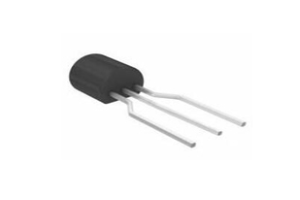
How the J113 N-Channel Transistor Works in Electronic Circuits
στο 2024/11/14
Δημοφιλείς θέσεις
-

Τι είναι το GND στο κύκλωμα;
στο 1970/01/1 3203
-

Οδηγός σύνδεσης RJ-45: Κωδικοί σύνδεσης RJ-45, Σχέδια καλωδίωσης, Εφαρμογές R-J45, RJ-45 Datasheets
στο 1970/01/1 2767
-
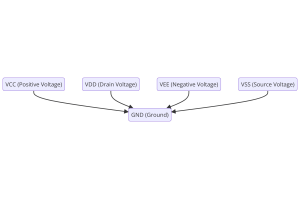
Κατανόηση τάσεων τροφοδοσίας σε ηλεκτρονικά VCC, VDD, VEE, VSS και GND
στο 0400/11/18 2470
-
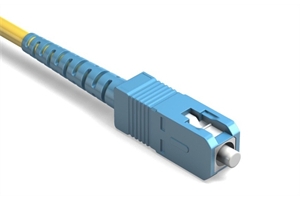
Τύποι σύνδεσης ινών: SC vs LC και LC VS MTP
στο 1970/01/1 2223
-

Σύγκριση μεταξύ DB9 και RS232
στο 1970/01/1 1847
-
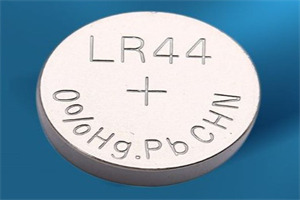
Τι είναι η μπαταρία LR44;
Η ηλεκτρική ενέργεια, αυτή η πανταχού παρούσα δύναμη, διαπερνά ήσυχα κάθε πτυχή της καθημερινής μας ζωής, από τα ασήμαντα gadgets έως τον απειλητικό για τη ζωή ιατρική εξοπλισμό, παίζει έναν σιωπηλό ρόλο.Ωστόσο, η πραγματικ...στο 1970/01/1 1821
-

Κατανόηση των θεμελιωδών στοιχείων: Αντίσταση επαγωγής, και καταφύγιο
Στον περίπλοκο χορό της Ηλεκτρολόγων Μηχανικών, ένα τρίο θεμελιωδών στοιχείων παίρνει το κεντρικό στάδιο: επαγωγή, αντίσταση και χωρητικότητα.Κάθε φέρει μοναδικά χαρακτηριστικά που υπαγορεύουν τους δυναμικούς ρυθμο...στο 1970/01/1 1775
-

CR2430 Περιεκτικός οδηγός μπαταρίας: Προδιαγραφές, εφαρμογές και σύγκριση με μπαταρίες CR2032
Τι είναι η μπαταρία CR2430;Οφέλη από μπαταρίες CR2430ΚανόναςΕφαρμογές μπαταρίας CR2430CR2430 ισοδύναμοCR2430 VS CR2032Μέγεθος μπαταρίας CR2430Τι να ψάξετε όταν αγοράζετε το CR2430 και τα ισοδύναμαΦύλλο δεδομένων PDFΣυχνές ερωτήσεις Οι μπαταρ...στο 1970/01/1 1749
-

Τι είναι το RF και γιατί το χρησιμοποιούμε;
Η τεχνολογία ραδιοσυχνότητας (RF) αποτελεί βασικό μέρος της σύγχρονης ασύρματης επικοινωνίας, επιτρέποντας τη μετάδοση δεδομένων σε μεγάλες αποστάσεις χωρίς φυσικές συνδέσεις.Αυτό το άρθρο βυθίζεται στα βασικά του RF, ...στο 1970/01/1 1739
-

Περιεκτικός οδηγός για το HFE σε τρανζίστορ
Τα τρανζίστορ είναι κρίσιμα συστατικά σε σύγχρονες ηλεκτρονικές συσκευές, επιτρέποντας την ενίσχυση και τον έλεγχο του σήματος.Αυτό το άρθρο ασχολείται με τη γνώση γύρω από το HFE, συμπεριλαμβανομένου του τρόπου επιλογ...στο 5600/11/18 1726

